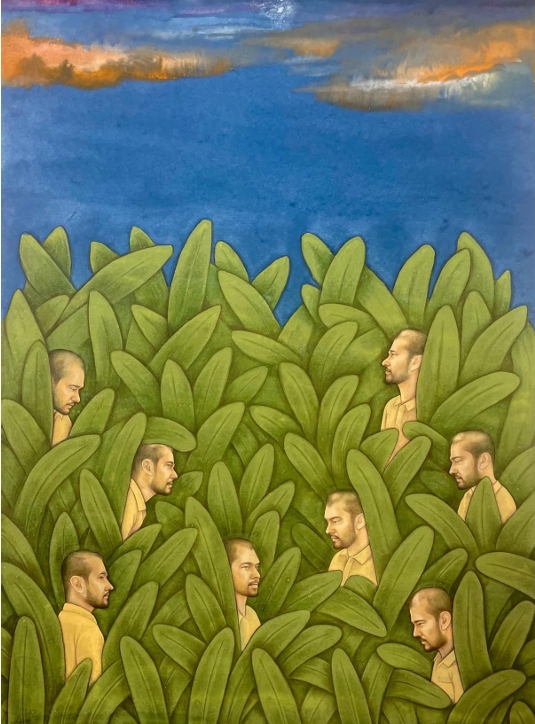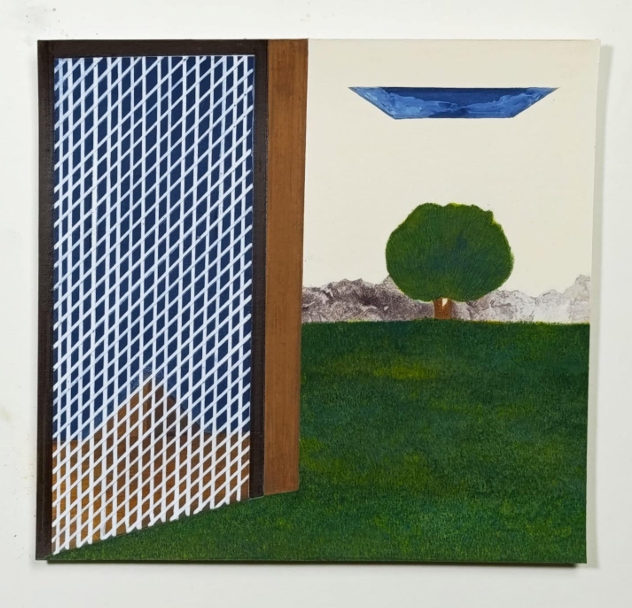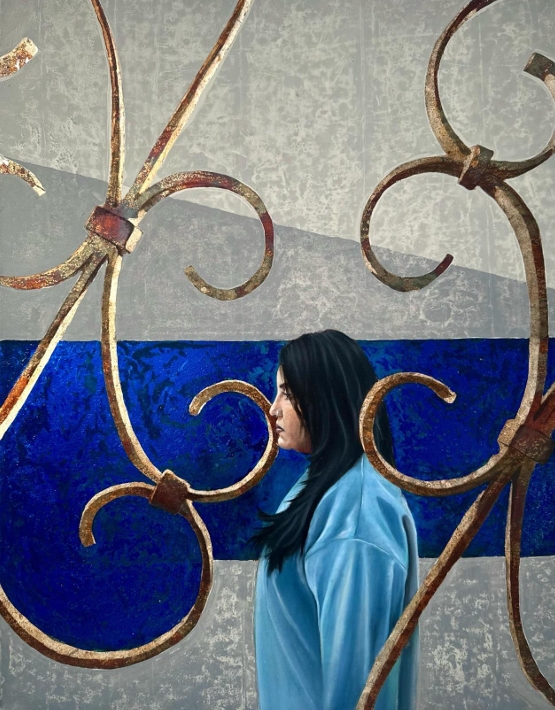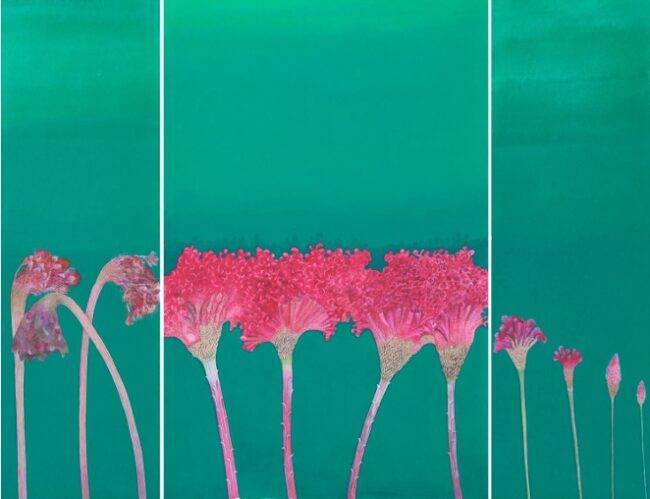A group exhibition opened at Ejaz Art Gallery, tracing memory and transformation. A review of ‘Creative Currents: Emerging Perspectives II’ In a c
A group exhibition opened at Ejaz Art Gallery, tracing memory and transformation. A review of ‘Creative Currents: Emerging Perspectives II’
In a city where art often struggles to find breathing room amid the noise of commercialism and tradition, Creative Currents: Emerging Perspectives II at Ejaz Art Gallery offered a refreshing pause, a quiet, thoughtful space that foregrounds the voices of recent Fine Arts graduates from the National College of Arts. As a continuation of last year’s edition, this exhibition not only charts the evolving trajectories of these young artists but also reflects the pulse of a generation navigating an increasingly complex world.
This year’s iteration moves beyond the purely figurative to embrace a diverse array of practices. What unites the works, however, is not a formal similarity, but rather a shared sense of introspection and emotional honesty. These are artists making sense of themselves, their histories, and their place in an ever-shifting cultural and political landscape.

Many of the works in this exhibition engage deeply with the idea of the self as plural, fragmented, and ever-changing. One can see this in the use of repetition, layering, and erasure, techniques that mirror the constant internal dialogue that defines contemporary life. These young artists are not offering definitive answers; instead, they are revealing process, vulnerability, and flux. In a world that demands certainty and performance, their work resists finality. It speaks of becoming, of unraveling and re-forming. A central thread weaving through this exhibition is the artists’ deep engagement with memory; personal, collective, and sensory. For some, it emerges in the form of reinterpreted family photographs, domestic objects, or references to oral history. These works draw on nostalgia but resist sentimentality. They treat memory not as a fixed archive but as something fluid and open to reinterpretation, distortion, and reinvention. The past, here, is not a place to return to, but a lens through which the artists look forward.

Artists like Aaila Zahra, Alishba Binte Faisal, Sabir Hussayn, and Rabia Mohsin reflect on home, history, and identity through meticulous processes that mirror the fragmented and mutable nature of recollection. Zahra’s intricate miniature paintings transform architectural and environmental elements of her home into symbols of memory, while Faisal’s layered canvases of paint and charcoal enact the very act of remembering; building, distorting, and erasing. Hussayn, working from family photographs, bridges past and present, reimagining personal archives as shared emotional landscapes. Mohsin’s brooding, atmospheric landscapes hint at buried histories and tensions just beneath the surface, evoking a sense of disquiet that resonates with the fragility of memory itself.

Another significant current is the artists’ exploration of space, perception, and the human condition. Abdul Wahab, Ali Bin Arshad, Laraib Amin, Rafay Talpur, and Usama Ishaq examine the ways in which space, both physical and psychological, shapes and reflects identity. Wahab’s study of light, space, and form reminds one of the intimate relationship between emotional states and lived environments, while Arshad’s pointillist constructions invite viewers to experience the instability of perception itself. Amin uses familiar interiors to address feelings of displacement and estrangement, while Talpur’s focus on shadow patterns and light draws from deeply personal memories, turning trauma into poetic visual language. Ishaq visualizes self-dialogue by populating single compositions with multiple figures of himself, mapping the layered interiority of identity.
Materiality and transformation, especially as metaphors for time and change, also dominate the exhibition. Swarim Abid, Bareera Sajid, Muneeba Shakil, Zeeshan Amjad, and Hadia Hassan each explore how processes like oxidation, growth, erosion, or repetition shape form and meaning. Abid’s silver-leaf works embrace decay as a generative force, revealing how time marks surfaces and memory alike. Sajid studies plant life cycles to meditate on growth, resistance, and renewal. Shakil’s simplified brushwork captures moments suspended between movement and stillness, while Amjad uses flowing geometry and pattern to articulate the interconnectedness of human emotions. Hassan’s quiet, minimalist compositions offer a pause, spaces for contemplation that mirror the passage of time through subtle lines and muted hues.

The exhibition also amplifies feminist voices interrogating the body, vulnerability, and transformation. Maheen Khan uses avian imagery to evoke the female experience, moving beyond direct bodily forms to explore constraint and emergence through fragmented, delicate imagery. Maheen Elahi, in contrast, crafts dreamlike, liminal spaces where night skies and silhouetted trees invite introspection and wonder. Lastly, Waleed Bin Shahzad blurs the real and surreal, while Ali Bin Arshad and Zeeshan Amjad gesture toward the metaphysical in their use of form and repetition, grounding abstraction in emotional resonance. Together, these artists form a vibrant chorus—attuned to the complexities of living, remembering, and becoming in contemporary Pakistan.

By dedicating space and visibility to emerging artists, this exhibition provided a much-needed platform for experimentation and risk-taking. For recent graduates, this opportunity is invaluable, not only for exposure but also for validation. It affirms that their voices matter, that their tentative steps into the art world are worth witnessing. In offering these young artists a stage, galleries play a vital role in sustaining the ecology of art practice in Pakistan.
Ultimately, Creative Currents: Emerging Perspectives II was not just an exhibition but a gesture of care and commitment. It reminds us that art is not only about aesthetics or concept, but also about the act of navigating: life, memory, identity, and transformation. For the young artists in this show, art becomes a compass, pointing not necessarily to fixed destinations, but offering ways of moving through the uncertainty of their time.
